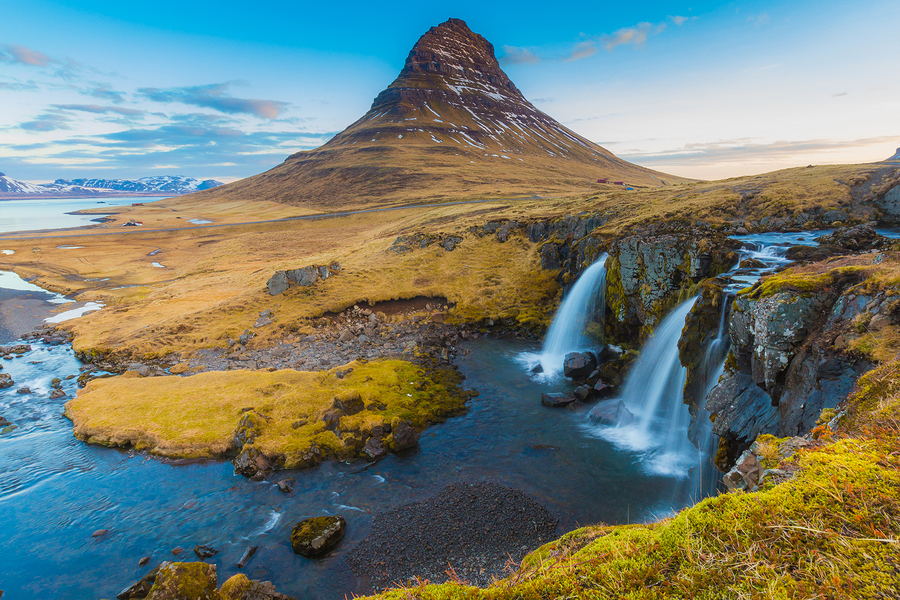Off the beaten track in Iceland
It’s 20 years since I was last in Iceland – back in the days of sending a coupon off for your brochure, writing deposit cheques and anxiously awaiting the arrival of your tickets in the post – and the one thing that is immediately obvious is that – like most places – there are a lot more tourists here than there were before. The likes of Geysir and Gullfoss are now a sea of coaches (although still worth a visit for their spectacular beauty) but Iceland is still Europe’s least densely populated country and there are sights just as wonderful – if not more so – off the beaten track (quite literally track in some places). I still haven’t been to Reykjavik and given the volume of traffic experienced on leaving Keflavik Airport, I don’t really feel I need to.
I’d recommend anyone visiting Iceland to rent a car, preferably a 4 X 4 (even the major roads are often heavily rutted and in winter the odd snowdrift may suddenly appear) which will give you the opportunity to explore where the coaches cannot go. Rent with a major, not an off-airport local – although the deals may seem good, the service and T&Cs rarely are. Do not use the unfortunately named greenmotion, who will require a credit card deposit of 2400 euros.
If you’ve never been to Iceland, just 3 hours from London, the chances are you’ve been put off by the weather or the reputation for extreme expense. In fact, the climate is not dissimilar to our own and this winter (2016/17) only two days have reached minus 4. The freak 51cm snowfall on 1st March was just that, only being surpassed once in the country’s history. Similarly freakish were the 18C temperatures recorded on the east coast in February. Whereas, however, we speak about ‘four seasons in one day’, Icelanders expect it – howling winds push out hailstorms to replace them with crystal clear blue skies and a little warmth from the winter sun before the snow follows and so on. Accommodation doesn’t have to be expensive (there are plenty of comfortable cabin and camping options) but unfortunately drinking and eating out is. There are several micro-breweries producing Stouts, Porters and Pale Ales of up to 14% but you’ll be paying in excess of £8 per pint for them. Dinner for two with a few drinks will set you back £100 anywhere but the food is extraordinarily good – cured lamb, horse steak and a vast variety of locally caught fish. Also, when calculating your budget, don’t forget that most outdoor attractions in Iceland are free (even though the toilets at Guilfoss ae the first I’ve seen in the world that accept credit cards – just try not to listen to the gushing water!)
Don’t go to Iceland if you’re into architecture or interior design – corrugated shacks and net curtains are still the norm here. Visit a little fishing port like Eyrarbakki and your first impression will be that your entering Jaywick. Nice prison. In the UK, you may not feel that at ease getting out of your car but this is a typical Icelandic fishing village with a population of around 500 and a perfectly acceptable restaurant (the Red House). If you want to cut down on meal costs, eat chowder everywhere (you get unlimited refills!). 100 years ago, this treacherous bit of coast was Iceland’s main anchorage and ambitious plans were hatched to build a city of 6000 people until someone realised that we’re not all Vikings and found somewhere a bit more sheltered from the north Atlantic winds.
More than anything, Iceland is about waterfalls and volcanoes. Two of the best falls are Skogafoss, which you can walk behind – wet gear essential) and the poorly signed Faxi near Laugabas. You can stand within inches of both top and bottom of these powerful falls. At nearby Fludir is the smaller and less heavily visited Secret Lagoon, a cheaper and better option to the world famous Blue Lagoon. Even here, it is best to arrive before 3:30pm to avoid the crowds).
Another famous sight on the south coast is the fuselage of a DC3 which crashed in the 70’s. Undoubtedly unusual and evocative, do be aware that visiting this wreck involves an 8km walk over a flat lava field, often shrouded in thick fog. If you’re on a short break, you can use your time better.
Whatever time of year you visit, if the weather precludes you from seeing the Midnight Sun or the Northern Lights, Iceland has a wealth of quirky museums. From Petra’s Stone Collection in Stodvarfirdi (a collection of thousands of stones collected over 70 years by the eponymous owner) to the Museum of Penises in Reykjavik, which is exactly what it says it is, to the relatively obscure Fransmenn a Islandi, which tells the fascinating story of the French boats who fished the waters off the east coast from the 18th century.
To find the real treasures though, take off on Road 26 from just outside Hella (an ideal base for exploring the south) drive up the Pjorsa valley and come back on the parallel road on the other side of the river. The views are exhilarating, breath-taking and unearthly. Imagine yourselves in the shoes of the first men to cross the country by car in 1933 in a 1927 Ford.
Iceland has much to offer and although your heart may often be in your mouth, I guarantee that you’ll want to return.
ColinS11 would love your feedback, please leave your comments below:
Showcase your literature
Log in to contribute
You need to be logged in to interact with Silversurfers. Please use the button below if you already have an account.
LoginNot a member?
You need to be a member to interact with Silversurfers. Joining is free and simple to do. Click the button below to join today!
Join



















